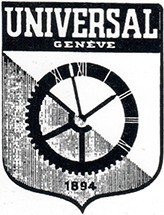Select which models you want to look at:
CHRONOGRAPHS | |
|---|---|
Compur 1st Gen (Early 1930s) | |
| Born as the first, 2 pusher chronograph, this early Compur functions with an ingenious double column wheel system that allowed the 2 o’clock pusher to act as a start-reset and the 4 o’clock one to act as a stop-restart. The 1st generation Compur featured a 2 register dial: the left register for continuous seconds and the right counter for 30 or 45 minute recordings. | |
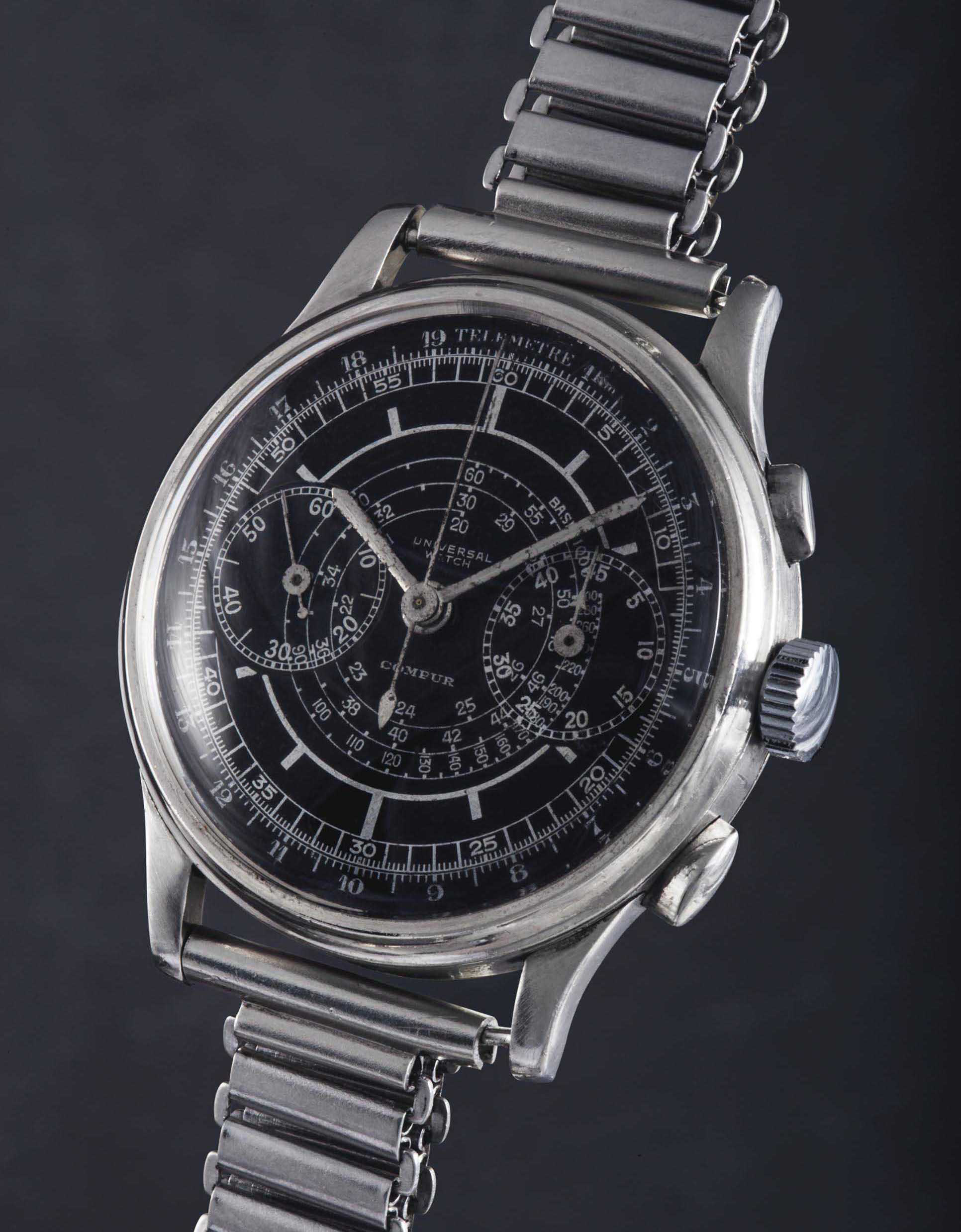 A 1st generation Compur with black sector dial by @Christies |
|
Compur (1934 - 1940s) | |
|---|---|
| Monumentally important for Universal Genève, the Compur was the first modern chronograph release by the brand, and the model that would establish UG as a pillar in the field of chronographs. The Compur featured a 2 register dial: the left register for continuous seconds and the right counter for 30 or 45 minute recordings. | |
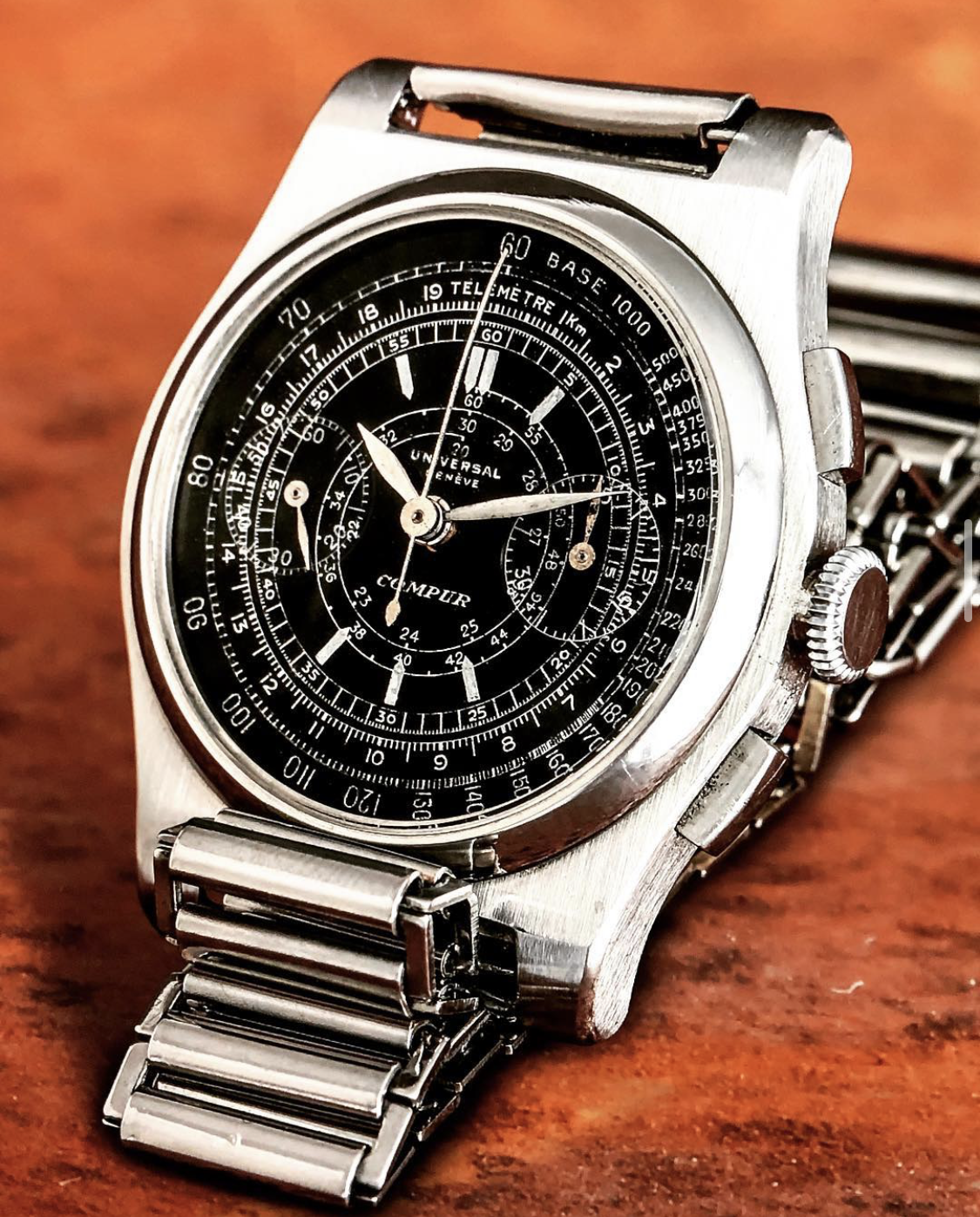 A black dial Compur in a rare Colonial case by @Mattioandre |
|
Uni-Compax (1937 - 1965) | |
|---|---|
| The evolution of the Compur, it would ultimately take over the model in the mid 1940s and would end in the final iteration as the reference 884100, aka the ‘Big Eye’ around the mid 1960s. The Uni-Compax featured a 2 register dial: the left register for continuous seconds and the right counter for 30 or 45 minute recordings. | |
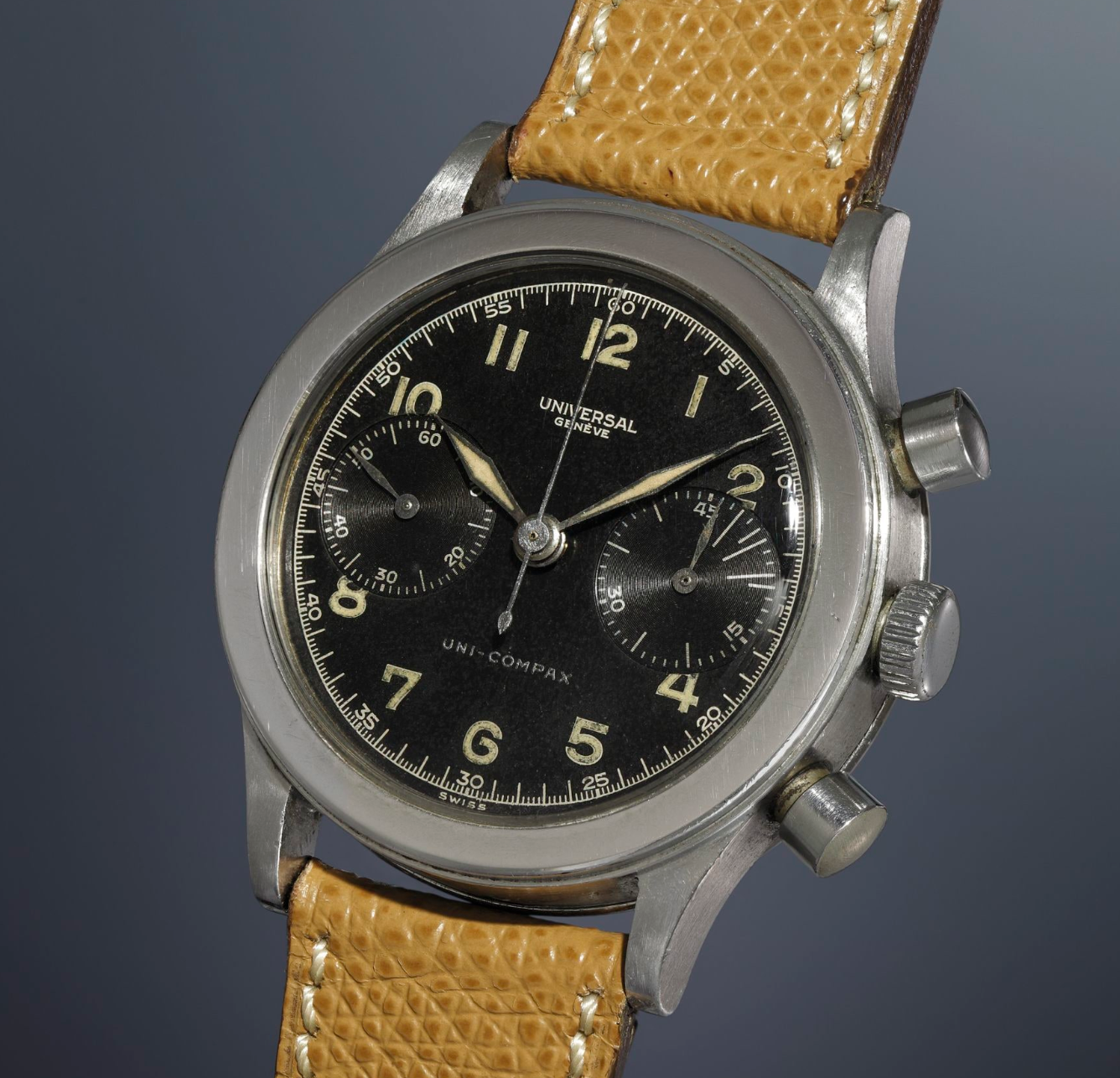 An early waterproof Uni-Compax ref. 7065 by @Phillips |
|
Contax (1936) | |
|---|---|
| The Contax was made only for a very brief period, less than a year, after which Universal would name it the Compax. It can be found around the 620’xxx-640’xxx serial range though very few examples are known today. The model featured a 3 register dial: left counter for continuous seconds, right minute register and 6 o’clock counter for 12 hour recordings. It has a unique feature that allows, once the chronograph is in motion, to make the hour-counter hand move backwards as to create a countdown effect. This feature was rather delicate and was probably abandoned in order to produce movements on a larger production scale. | |
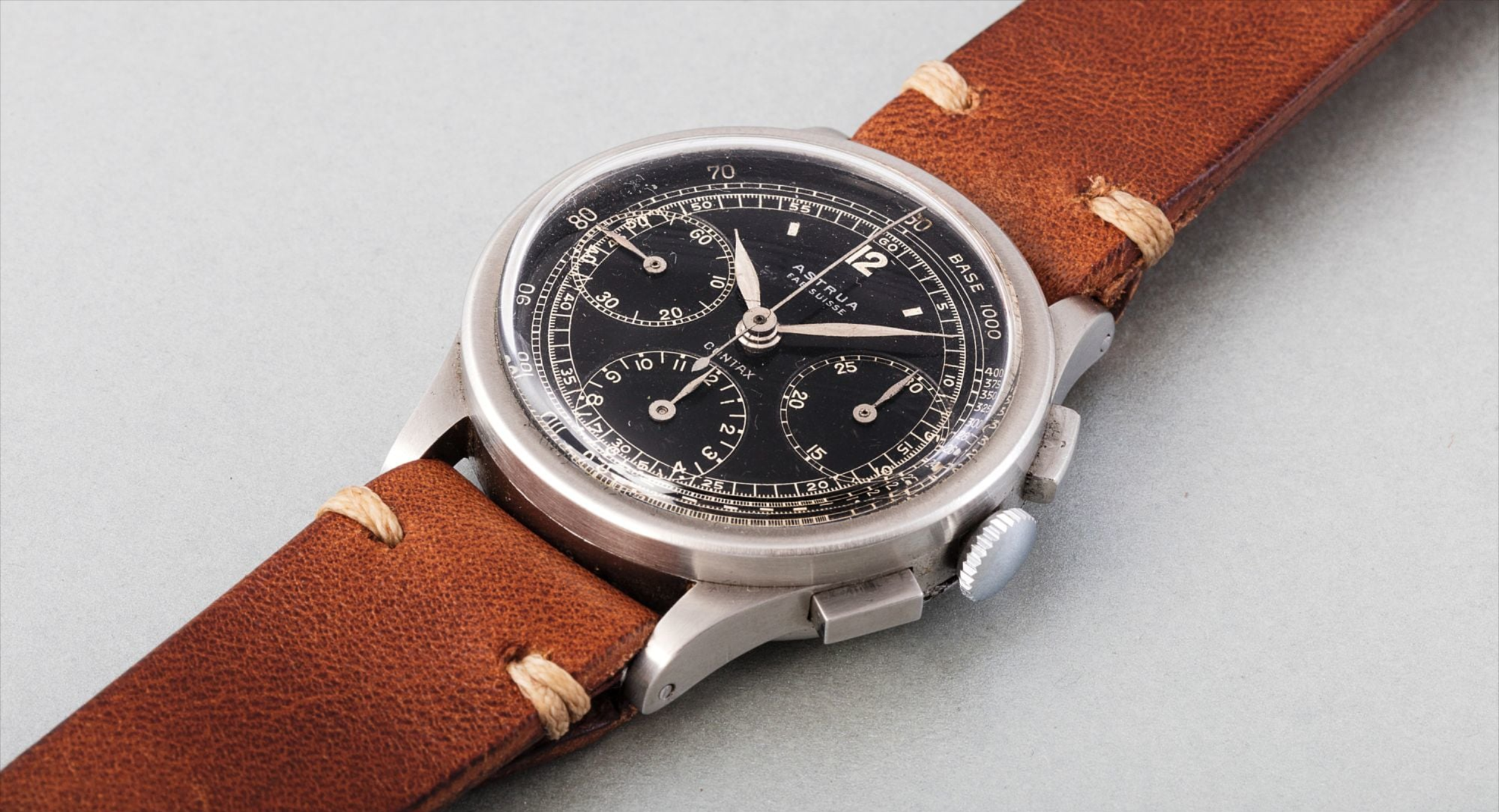 Astrua retailed black dial Contax ref. 5126 by @Phillips |
|
Compax (1937 - 1990s) | |
|---|---|
| The Compax was the first 3 register chronograph ever released at the 1937 Basel Show, once again cementing the pioneering nature of the brand in the field of chronographs. The Compax featured a 3 register dial: the left register for continuous seconds, the right counter for 30 or 45 minute recordings and the bottom register for 12 hour recordings. | |
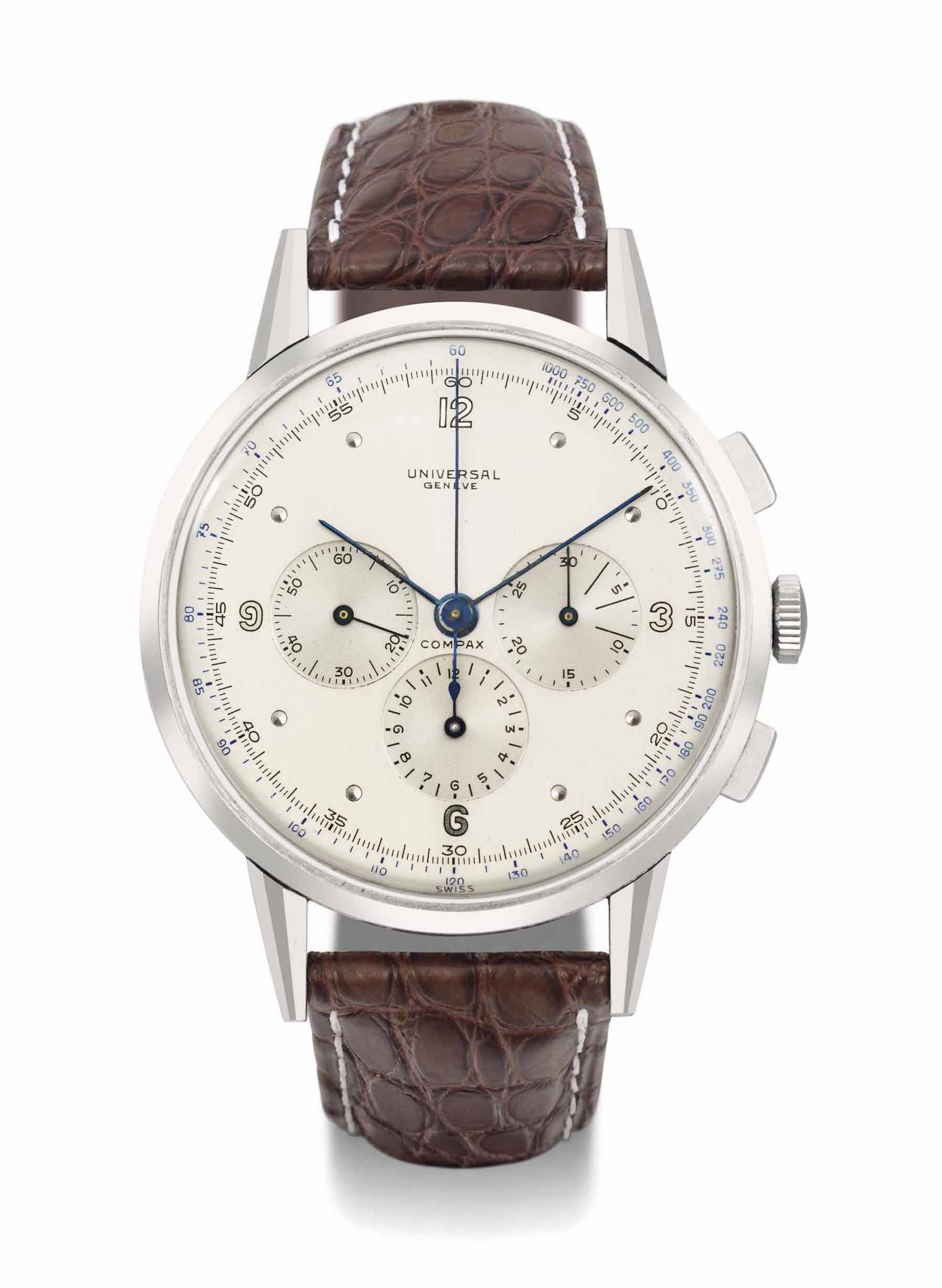 A rare 46mm ref. 22430 Compax by @Christies |
|
Medico-Compax (1945 - 1960s) | |
|---|---|
| The Medico-Compax was a simple 2 or 3 register chronograph with the particularity of having a base 15 (and very rarely base 30) pulsometric scale, which would allow the user to measure someone’s heartbeat by starting the chronograph whilst counting to 15 (or 30) pulses and then stopping the chronograph, the scale of which averages the beats per minute. It is most often found in a 2 register version though 3 counter examples have appeared. The model ceased to be produced around the early 1960s however a base 30 pulsometer bezel version of the ‘Nina Rindt’ Compax ref. 885105/02 was released in the mid 1960s and can be considered the last medico-compax. The Compax would also be the hit model of the 1990s rebranding. | |
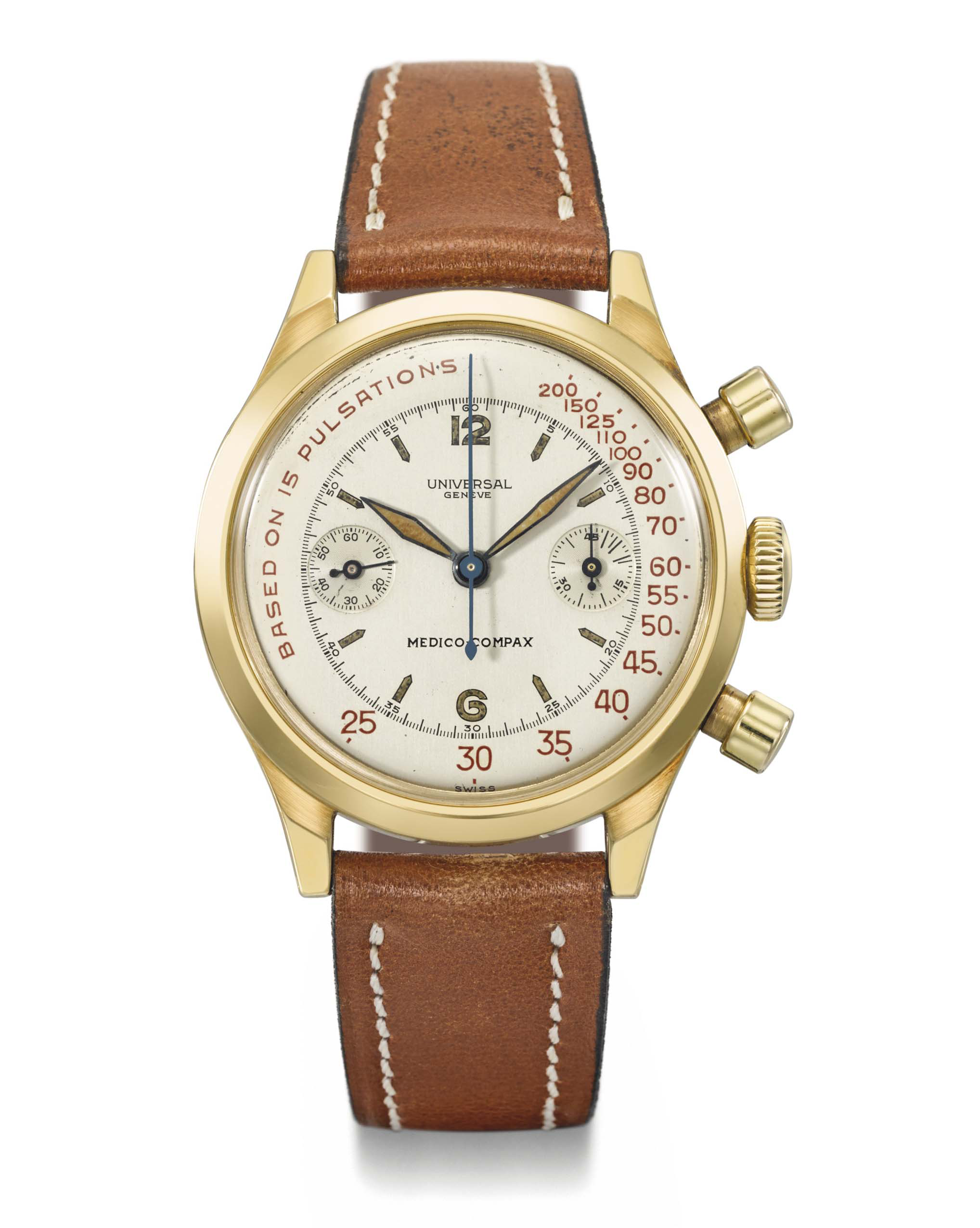 A gold Medico-Compax ref. 12482 with red pulsations scale by @Christies |
|
Dato-Compax (1945-1950s) | |
|---|---|
| The Dato-Compax is one of the more unusual designs to come out of the Genevan maison and features a unique form of date display: via a 31 day counter placed at 12 o’clock. The chronograph functions are the same of a Compax model. The model would have a rather short-lived existance and cease out of production in the 1950s. | |
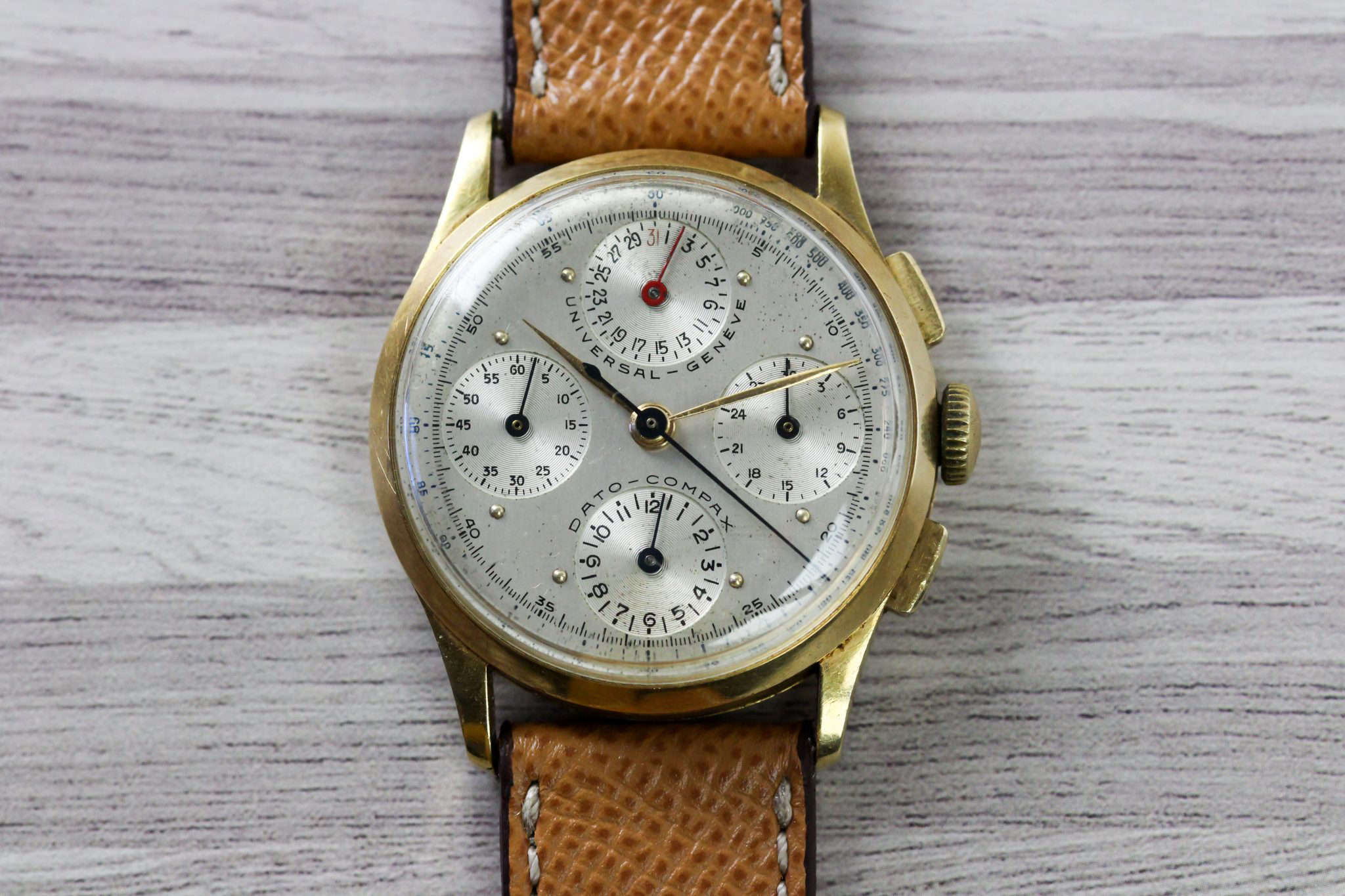 A gold Dato Compax ref. 12495 with silver dial by @Mentawatches |
|
Aero-Compax (1940s - 1970s) | |
|---|---|
| The Aero-Compax was dubbed and marketed as the ‘Business Man’s Watch’ in multiple ads at the time. Featuring the same chronograph functions as a Compax, it had the particularity of an added ‘memo’ subdial at 12 o’clock with a full 12 hour watch face complete of hour and minute hand. The hands of the ‘memo’ subdial move via a 9 o’clock crown and the model was ideated to remind the wearer of a particular event at a given time hence the ‘memo’. In the 1960’s releases the watch would lose the ‘memo’ counter and instead feature a 24 hour dial. | |
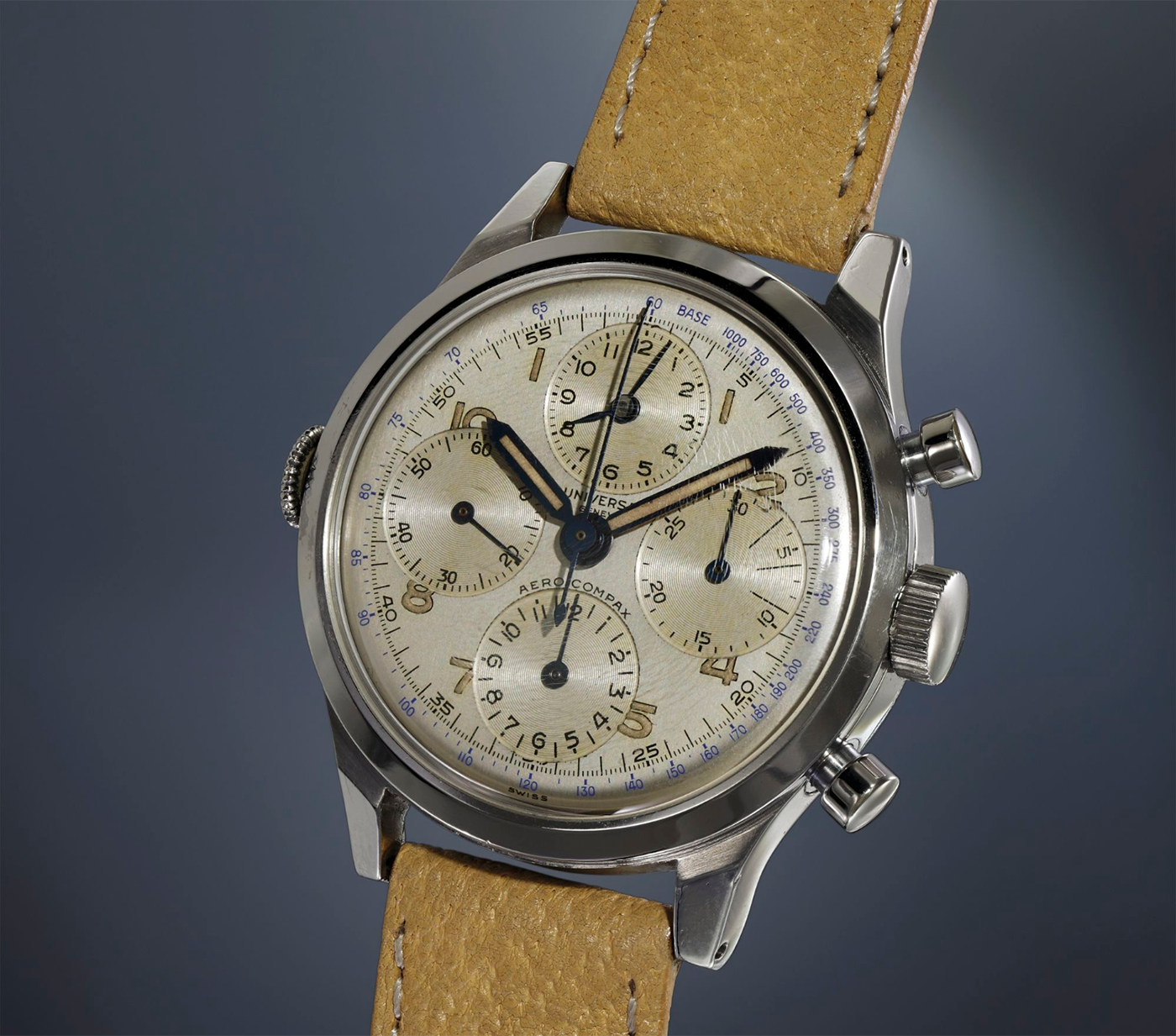 A ‘Spillman’ case ref. 22432 Aero-Compax by @Phillips |
|
Tri-Compax (1944 - 1990s) | |
|---|---|
| Introduced for the 50 year anniversary of the brand in 1944, the Tri-Compax is amongst the most celebrated models by collectors worldwide. It features the chronograph function of a Compax with the addition of an annual calendar partitioned as such: a 2 o’clock aperture for the month, a 10 o’clock aperture for the weekday and a semi-open counter at 12’clock for the date and moonphase. In the 1960s the model would evolve to the ref. 881101, the /01 version famously being worn by Eric Clapton and a gold version 181102 with exotic dial. In 1985 a Tri-Compax was made with an old stock of movements and in the 1990s an updated version would be launched, very different from the classic and everlasting design of the original release. | |
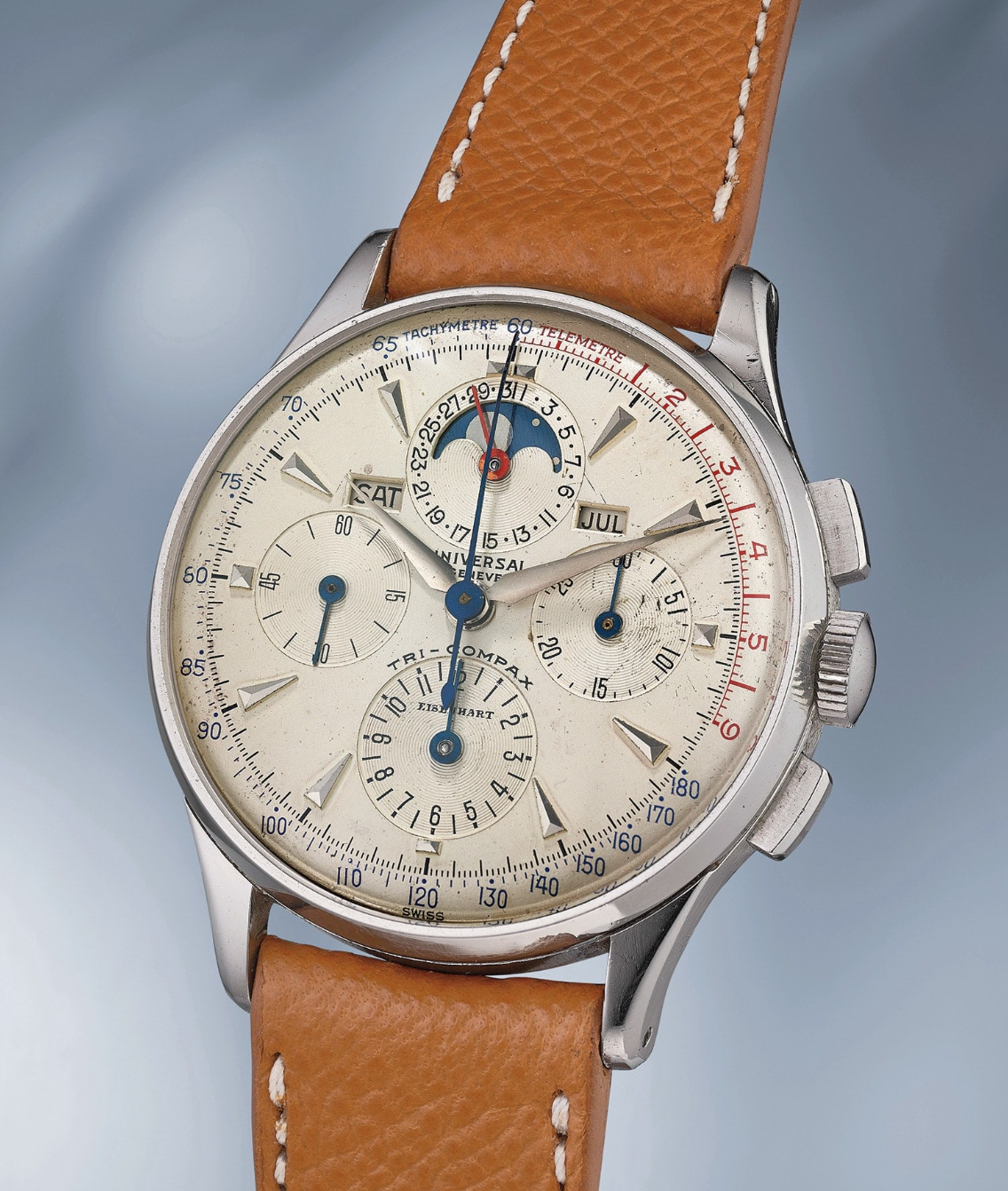 A double signed Tri-Compax ref. 22279/3 by @Phillips |
|
Film-Compax (1945) | |
|---|---|
| The Film-Compax is an enigmatic and unique watch made in a small batch in 1945, presumably only for the US market, with less than 10 examples known today. The watch features a 3 counter dial with a unique configuration. On the outer track, there are 2 different colored scales that represent 16mm (red) & 35mm (black) film size, in accordance with the old industry standard of 24 frames per second. The left counter is for continuous seconds, the bottom counter is a 12 hour register whilst the right register measures increments of feet per minute for the 2 types of film size. On an old advertisement the watch is offered in steel and 14k, yet only steel examples have appeared on the market. | |
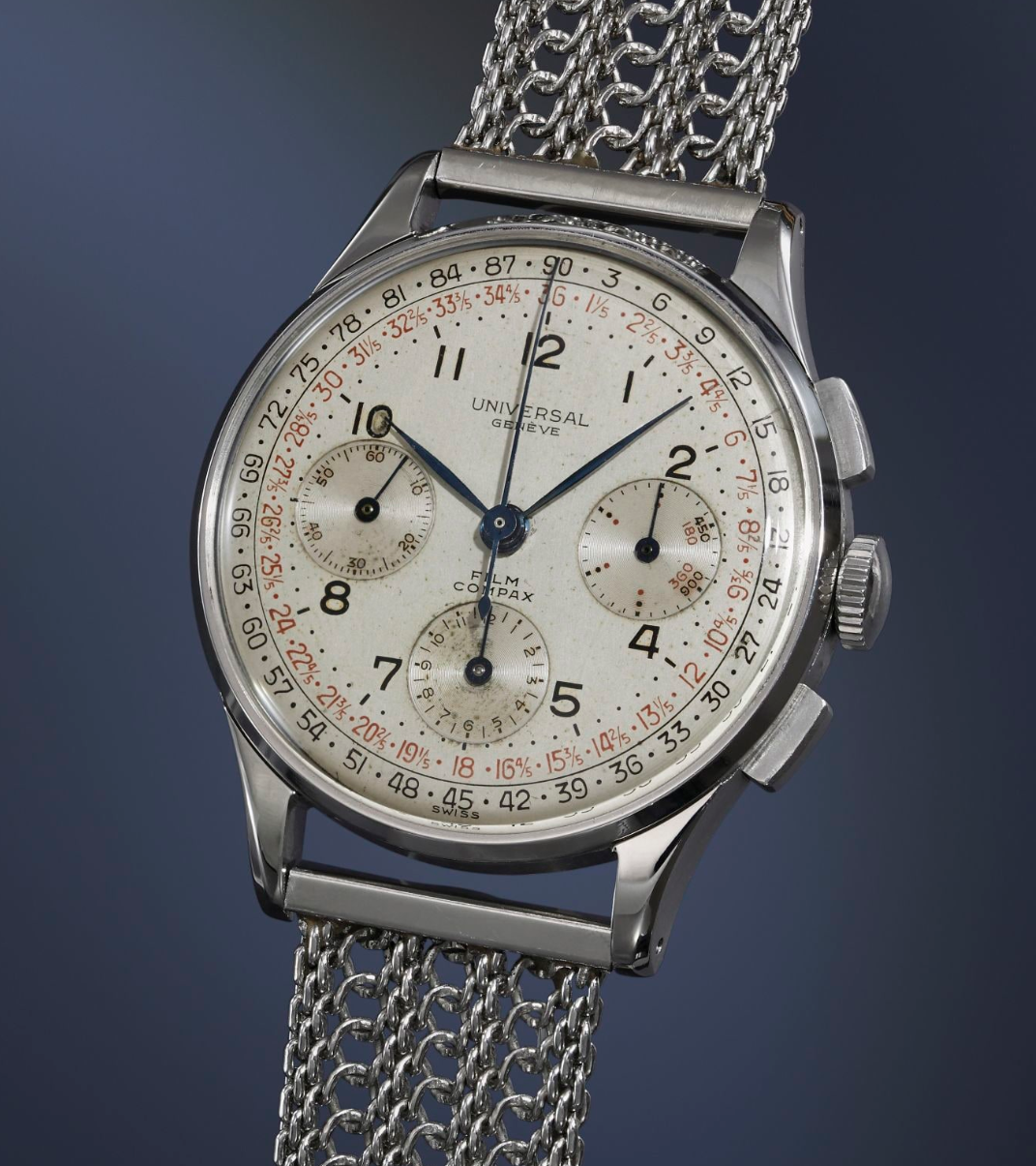 A steel Film-Compax ref. 22522 by @Phillips |
|
Climate Proof Compax (Early 1950s) | |
|---|---|
| A seldom seen sub reference of the Compax, the Climate Proof was a further attempt to improve the impermeability and weather resistance of the chronograph. Made in 2 versions: a 34 and a 37mm both with pump pushers, it has the unique trait of having 2 casebacks, an outer and an inner one that added further resistance to humidity and other threats. It displays the chronograph complication of a Compax with a 30’ minute register at 3 o’clock. | |
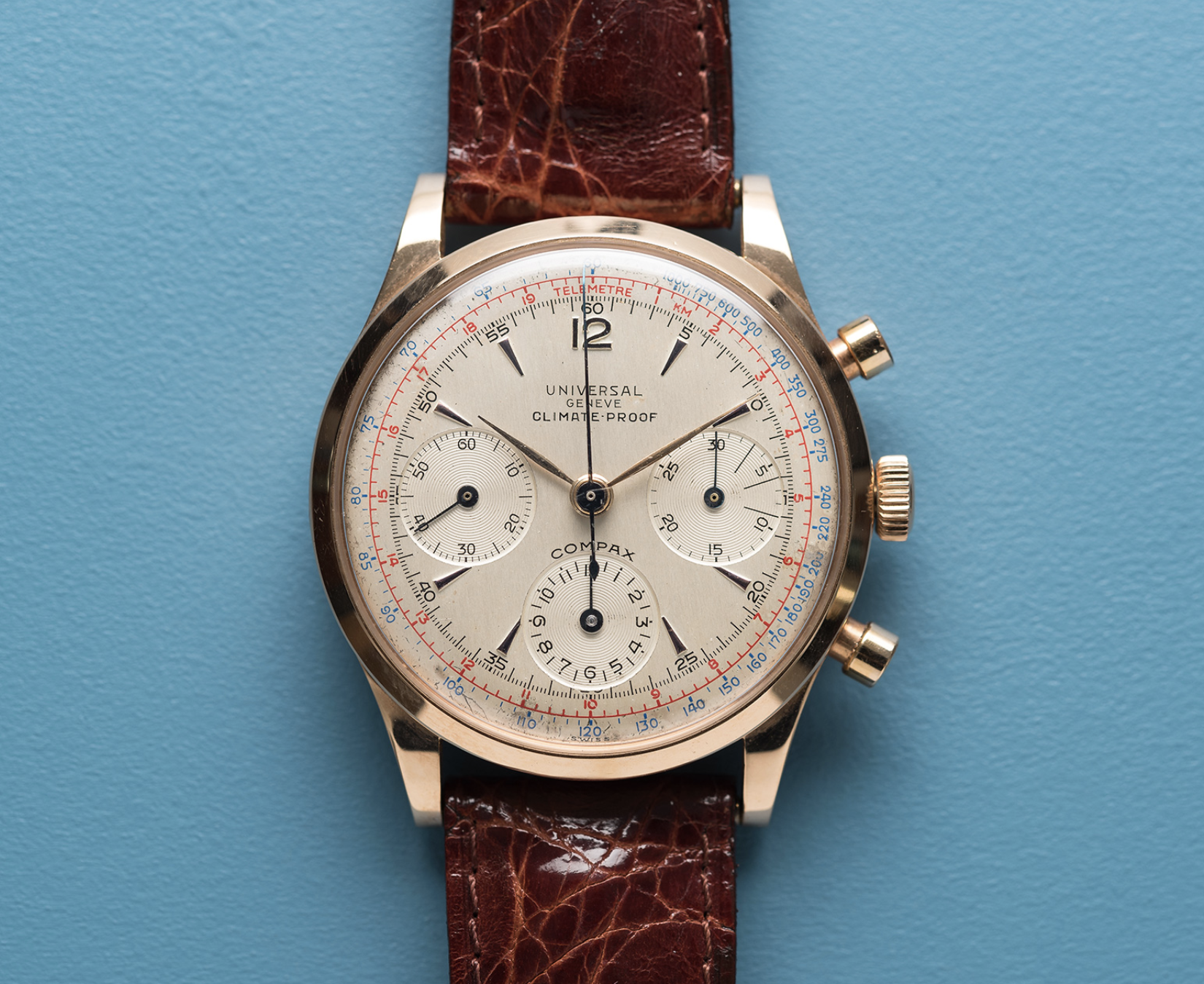 A 37mm Climate Proof ref. 124113 by @Bexsonn |
|
Space-Compax (1966 - 1968) | |
|---|---|
| The Space-Compax would be one of the company's last truly innovative releases and was heavily influenced by the approaching 1970s design of bulkier and funkier watches. Born as an attempt to further waterproof the chronograph, it featured an asymmetric case similar to that of the late Polerouter Sub (a Gerald Genta design) with waterproof rubber pushers and a UG 85 Cal. based on the Valjoux 72. It displayed the same chronograph functions as Compax with a 30’ minute register at 3 o’clock and came in 2 dial iterations. | |
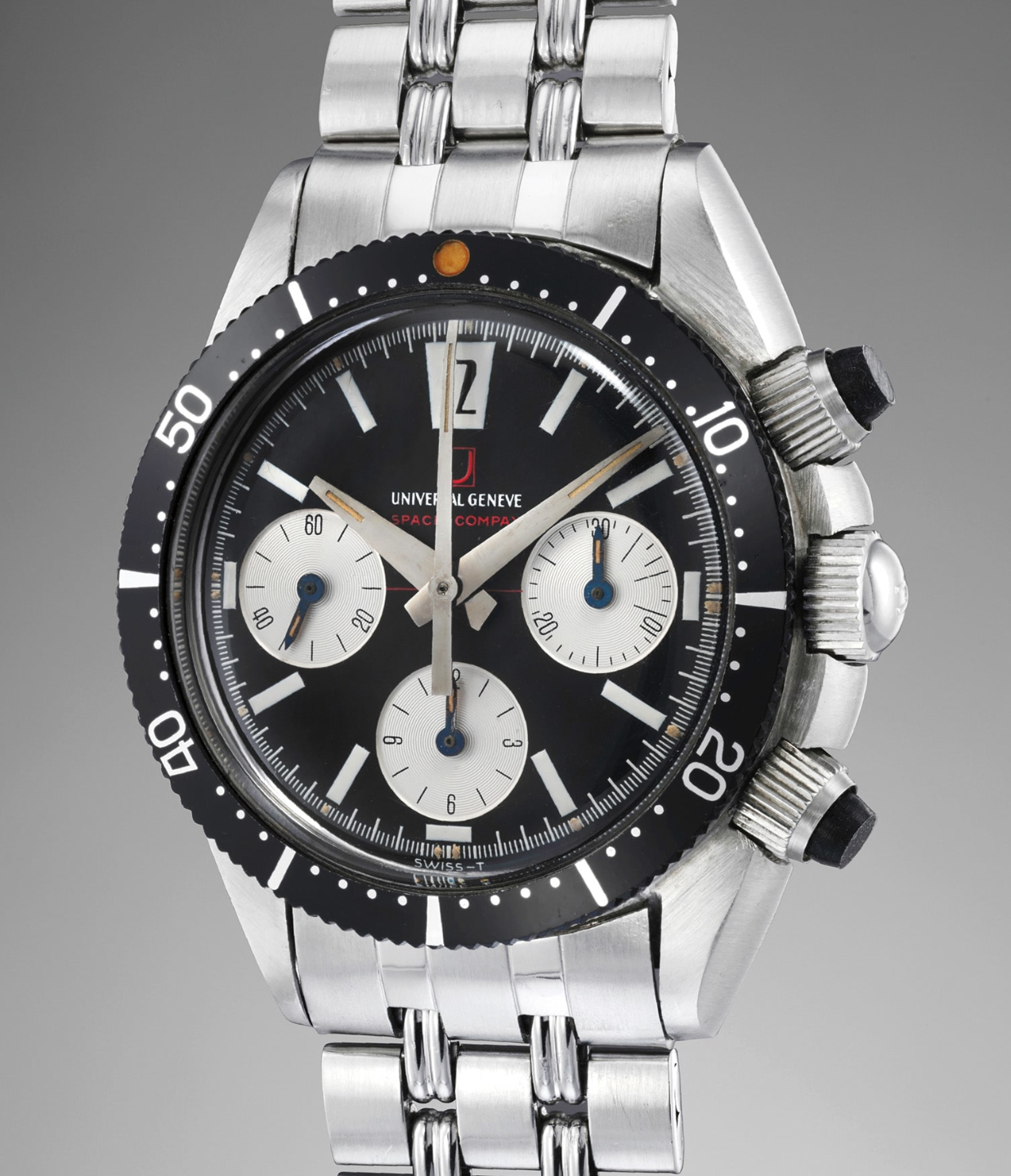 A Space-Compax ref. 885104/01by @Phillips |
|
CALENDAR | |
|---|---|
Simple Calendar | |
| The Simple Calendar by UG was introduced in 1943 and is the company's response to a growing demand for more complicated watches. Through the use of two counters, Universal managed to maintain the aesthetic of a chronograph and give the annual calendar a more interesting look. The left counter displays continuous seconds whilst the right one is for the date. Furthermore, the watch features 2 apertures: at 12 o’clock we find the week day and at 6 o’clock the month. | |
 A simple calendar with radium dial by @romainrea |
|
Moonphase Calendar | |
|---|---|
| The Moonphase Calendar was also introduced in 1943 and though it doesn’t have a specific name, its design makes it very recognisable in the eyes of the collector. Following the chronograph aesthetic well cemented in the ethos of Universal Genève, the moon phase calendar displays 3 counters and a 12 o’clock aperture. The left counter being for continuous seconds, the right one for the date, the 6 o’clock semi-open counter features both the moonphase complication and the month via a hand whilst the 12 o’clock aperture is for the weekday. | |
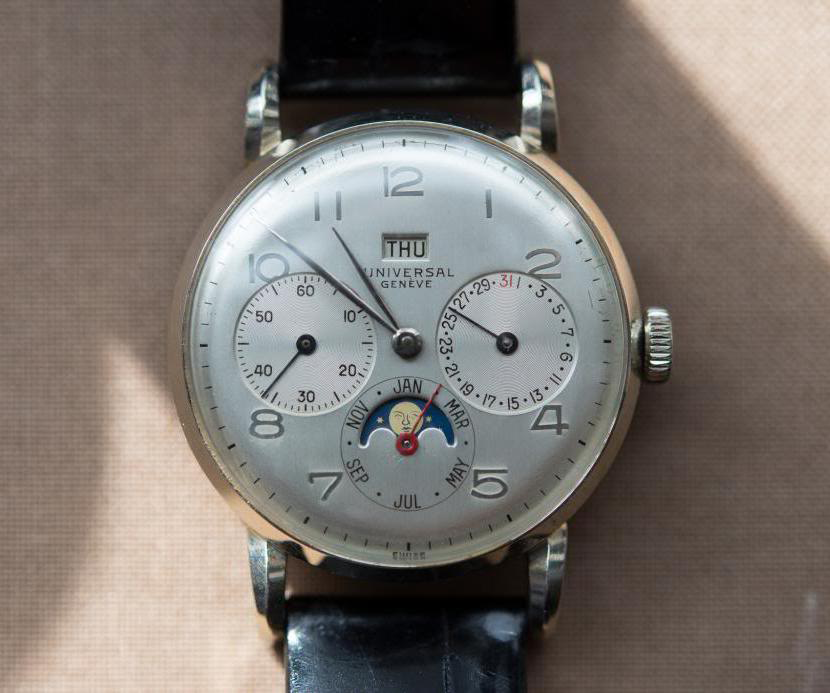 A white gold triple calendar with moonphase ref. 71301 by @Hodinkee |
|
TIME ONLY | |
|---|---|
